The History of Long Cross Pennies
The coins of Damsels in Distress and Knights in Shining Armor
by Robert Lewis Knecht & April A Knecht
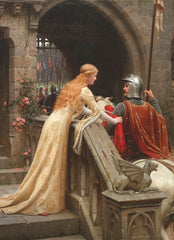 When we are called upon to envision medieval Europe, a Monte Pythyon-esque vision may quickly come to mind: Romantic images of chivalrous knights in shining armor rescuing fair damsels in distress, jousting tournaments and legendary feats of daring-do float through our imagination. But have you ever stopped to wonder how those knights and damsels paid for their suits of armor, flowing gowns, and roasted turkey legs? Well, the answer is the rare and extraordinary hand-hammered penny!
When we are called upon to envision medieval Europe, a Monte Pythyon-esque vision may quickly come to mind: Romantic images of chivalrous knights in shining armor rescuing fair damsels in distress, jousting tournaments and legendary feats of daring-do float through our imagination. But have you ever stopped to wonder how those knights and damsels paid for their suits of armor, flowing gowns, and roasted turkey legs? Well, the answer is the rare and extraordinary hand-hammered penny!
This is the story of the invention of this world-changing and pivotal shining silver coin.
A Brief Tour Back in Time…
Within a generation of the fall of the Roman Empire in Britain which occurred circa AD 410, coins fell out of use as a common form of exchange. Over 200 “dark” years passed before England’s new rulers, the Anglo-Saxons, started minting their home-grown currency of their own.
Charlemagne, King of the Franks, Father of Europe (and Really Important Coin Guy) Takes the Stage:
 As historians and numismatists, we see the 8th Century as one of the most important in European monetary history. Charlemagne (768-814), also called Charles the Great, and sometimes the “Father of Europe,” was King of the Franks, a sprawling kingdom that became known as the Carolingian Empire. In just a few short years, Charlemagne united most of Western Europe for the first time since the Roman Empire, and laid the foundations for modern France and Germany. On Christmas day, 800, Pope Leo III crowned Charlemagne Emperor of the Romans, the first Holy Roman Emperor since Rome’s fall 300 hundred years earlier.
As historians and numismatists, we see the 8th Century as one of the most important in European monetary history. Charlemagne (768-814), also called Charles the Great, and sometimes the “Father of Europe,” was King of the Franks, a sprawling kingdom that became known as the Carolingian Empire. In just a few short years, Charlemagne united most of Western Europe for the first time since the Roman Empire, and laid the foundations for modern France and Germany. On Christmas day, 800, Pope Leo III crowned Charlemagne Emperor of the Romans, the first Holy Roman Emperor since Rome’s fall 300 hundred years earlier.
Now that I’m Holy Roman Emperor, I’ll Make Friends with King Offa and We’ll Invent the Hand-Hammered Silver Penny!
 Charlemagne’s reign saw a substantial restoration of European political authority along with a complete redesign of its coins. Across the Channel was Charlemagne’s counterpart, King Offa of Mercia (757-796), in the present-day English midlands. Charlemagne recognized Offa’s power and treated him with respect. Between them, the silver penny came into being and it went on to dominate European currency for 500 years.
Charlemagne’s reign saw a substantial restoration of European political authority along with a complete redesign of its coins. Across the Channel was Charlemagne’s counterpart, King Offa of Mercia (757-796), in the present-day English midlands. Charlemagne recognized Offa’s power and treated him with respect. Between them, the silver penny came into being and it went on to dominate European currency for 500 years.
But to Understand the Revolutionary Natured of this Penny… We Need to Travel Back in Time Once More…
Since the Lydians first invented coins circa 650 BC, two main issues have plagued coin issuers, and the peoples who used them: the consistency in quality of the metal (its intrinsic value), and the availability of small change. (We know, in a world where we routinely drop our pennies in a cup to avoid putting them in our pocket, this can be a bit hard to understand – but we’ll step you through it!) Ensuring consistent metal purity of coinage is often considered the main reason why mintmarks and moneyer’s (the men in charge of making coins) names, or initials, were put on coins – frankly, to keep them honest. Who wants the emperor or king knocking on their door (with those military guards who are not known for their sense of humor standing right behind him armed to the teeth) demanding to know what happened to the silver that was supposed to be put in his coins?
Ensuring consistent metal purity of coinage is often considered the main reason why mintmarks and moneyer’s (the men in charge of making coins) names, or initials, were put on coins – frankly, to keep them honest. Who wants the emperor or king knocking on their door (with those military guards who are not known for their sense of humor standing right behind him armed to the teeth) demanding to know what happened to the silver that was supposed to be put in his coins?
Of course, mintmark’s and moneyer’s marks did not keep the rulers themselves from debasing their currency from time to time by reducing the amount of silver in the coins and pocketing the rest, but we digress…
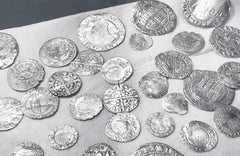 Back to the moneyers who, unbeknownst to the king, would do the same thing and pocket the extra silver for themselves…
Back to the moneyers who, unbeknownst to the king, would do the same thing and pocket the extra silver for themselves…
When a moneyer short-changed (see what we did there) the coins of his own accord, it made the king look bad – very, very bad. After all, he was issuing coins people couldn’t trust. History is marked by the heads, hands and other body parts of those shortsighted individuals who put personal profit above making their king look good.
Cool Historical Side Note (Our way of saying you can barrow this info and amaze your family and friends with your historic acumen):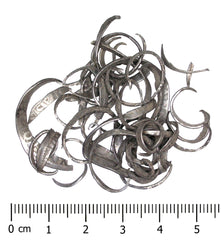 “Clipping” has been another major “con problem” for centuries. Prior to the invention of the screw press (1560), which put reeded (ridged) edges on coins (just like our modern coins) most coins were minted with a plain, flatish (remember, these are hand made) edge. And, due to the perpetual shortage of small change paired with the high value of silver and gold coins, making change was a constant headache. The solution? “Clip” off a piece of a coin – voilà… instant small change. Of course, the nefarious often clipped tiny bits of silver or gold from coin edges and sold the clippings as bullion. Have you ever heard the term, “I’ve been clipped”? Now you know where that comes from!
“Clipping” has been another major “con problem” for centuries. Prior to the invention of the screw press (1560), which put reeded (ridged) edges on coins (just like our modern coins) most coins were minted with a plain, flatish (remember, these are hand made) edge. And, due to the perpetual shortage of small change paired with the high value of silver and gold coins, making change was a constant headache. The solution? “Clip” off a piece of a coin – voilà… instant small change. Of course, the nefarious often clipped tiny bits of silver or gold from coin edges and sold the clippings as bullion. Have you ever heard the term, “I’ve been clipped”? Now you know where that comes from!
But Back to Our Silver, Hand-Hammered Pennies (Do we seem to be going back a lot here – the curse of the historian!) and the Invention of the Voided Short Cross Penny…
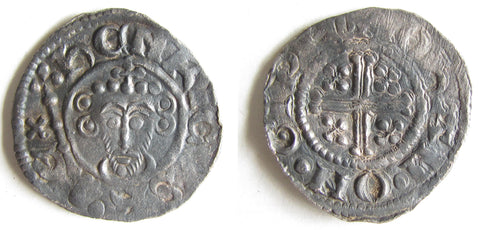 As the silver pennies of Britain progressed, Henry II (1154-1189) endeavored to solve the problems of coin quality and clipping by creating the “short cross” penny. Circa 1158, Henry established the silver coin alloy (a blend of metals, in this case to give the coins strength and durability) at 925/1000; 92.5% silver, 7.5% copper = .925 fine. Among other changes, a voided cross (a cross with parallel lines) was added. This proved to be an adroit addition as it created grooves where merchants could cut the pennies accurately into halfpence and quarters (farthings). However, the cut quarter penny was so small it was easily lost. Three of them equaled a loaf of bread (three farthings), so one can see that losing even one was nothing to take lightly. (Besides, C-stores hadn’t invented the leave-one-take-one penny tray yet.)
As the silver pennies of Britain progressed, Henry II (1154-1189) endeavored to solve the problems of coin quality and clipping by creating the “short cross” penny. Circa 1158, Henry established the silver coin alloy (a blend of metals, in this case to give the coins strength and durability) at 925/1000; 92.5% silver, 7.5% copper = .925 fine. Among other changes, a voided cross (a cross with parallel lines) was added. This proved to be an adroit addition as it created grooves where merchants could cut the pennies accurately into halfpence and quarters (farthings). However, the cut quarter penny was so small it was easily lost. Three of them equaled a loaf of bread (three farthings), so one can see that losing even one was nothing to take lightly. (Besides, C-stores hadn’t invented the leave-one-take-one penny tray yet.)
Unlike previous coin designs, which proved unpopular with the public, folks liked Henry’s design so much that it spanned 67 years and three more kings with no major changes: Richard I, the Lion Heart (1189-1199), John (1199-1216) and Henry III (1216-1272). However, throughout this time, one major problem remained - clipping. Since the short cross didn’t extend to the edges of the coins, it didn’t provide any protection against persons seeking to clip tiny bits from the edges.
Back to the Drawing Board… Or: The Invention of the Long Cross Penny
 So, in 1247, Henry Number Three made a breakthrough… he extended the cross to the edges of the planchet, or coin blank! Now, one could easily see if nicks or clips had been taken off a coin. But Henry didn’t stop there. He also plastered his name and title on both the obverse and reverse of the coin, leaving no room for the moneyer’s name or the mint’s location.
So, in 1247, Henry Number Three made a breakthrough… he extended the cross to the edges of the planchet, or coin blank! Now, one could easily see if nicks or clips had been taken off a coin. But Henry didn’t stop there. He also plastered his name and title on both the obverse and reverse of the coin, leaving no room for the moneyer’s name or the mint’s location.
And the inevitable result? Merchants and buyers alike were instantly reminded of the days when moneyers and their mints produced low-grade coins and the crown was unable to hold them to account as there were no distinguished marks on the coin to determine mint and moneyer.
So, In One of Those Much Publicized Releases (Where do you think Apple got the idea?) Long Cross Penny 2.0 Hits the Market Dies were sunk (the process of creating a design carved into metal for the purpose of making a coin) for Long Cross Penny 2.0, and the coins were minted. But while they had the mint town’s name, they were absent the moneyer’s name. (I mean, after all, we still needed all that room for the king’s name and domains.) And since more than one moneyer worked at a busy mint, it was not possible to I.D. any potential perp. (Read: Oh, just release the thing, we’ll fix the bugs in the next version!)
Dies were sunk (the process of creating a design carved into metal for the purpose of making a coin) for Long Cross Penny 2.0, and the coins were minted. But while they had the mint town’s name, they were absent the moneyer’s name. (I mean, after all, we still needed all that room for the king’s name and domains.) And since more than one moneyer worked at a busy mint, it was not possible to I.D. any potential perp. (Read: Oh, just release the thing, we’ll fix the bugs in the next version!)
Yep, You Guessed It – with Much Fanfare Long Cross Penny 3.0 Makes its Debut
Yes, all new dies were sunk, and this time the king relented, agreeing to abbreviate his title on the obverse, thus creating room for the mint’s town and moneyer on the reverse. The public loved these coins, and they became the accepted standard for trade both at home and as trade coins abroad.
The Long Cross Penny Becomes a Grandfather in its Own Right
So popular was the hand-hammered penny that it was the European standard (in various sizes) until the the discovery of the “New World,” and its abundant silver deposits set the stage for the “dollar” or Spanish 8 Reale – the legendary Piece of Eight.
Hand-Hammered Pennies of Special Interest
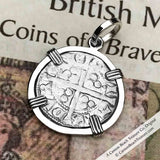 Edward I (the Longshanks), Edward II and Edward III all utilized the hand-hammered penny design – these coins have a distinctive medieval flair. You can view our collection of Edward coin necklaces here>>>
Edward I (the Longshanks), Edward II and Edward III all utilized the hand-hammered penny design – these coins have a distinctive medieval flair. You can view our collection of Edward coin necklaces here>>>
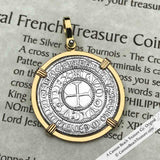 The Knights Templar of the Holy Land, and the Northern Crusaders both utilized hand-hammered pennies – coins that feature not only crosses, but sometimes cathedrals and even a chain mailed crusader himself. Check out our collection of Crusade and Templar coin necklaced here>>>
The Knights Templar of the Holy Land, and the Northern Crusaders both utilized hand-hammered pennies – coins that feature not only crosses, but sometimes cathedrals and even a chain mailed crusader himself. Check out our collection of Crusade and Templar coin necklaced here>>>
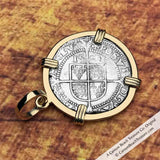 And, rounding out the end of the Long Cross Penny era are the coins of Elizabeth I and James I of England. Stunningly detailed and symbolic, these coins are some the most prized of all hand-hammered coins. Browse our collection of Elizabeth I and James I coin necklaces here>>>
And, rounding out the end of the Long Cross Penny era are the coins of Elizabeth I and James I of England. Stunningly detailed and symbolic, these coins are some the most prized of all hand-hammered coins. Browse our collection of Elizabeth I and James I coin necklaces here>>>



